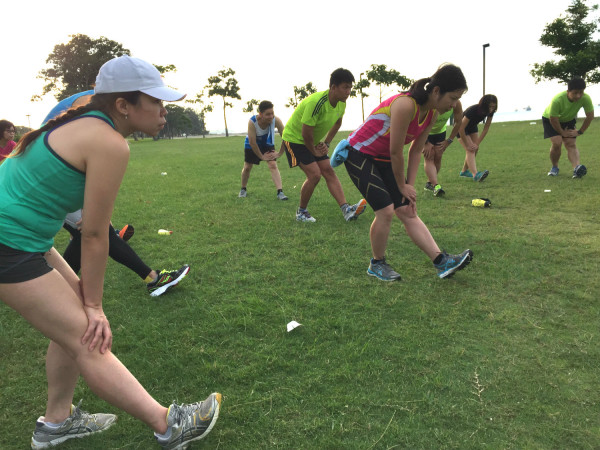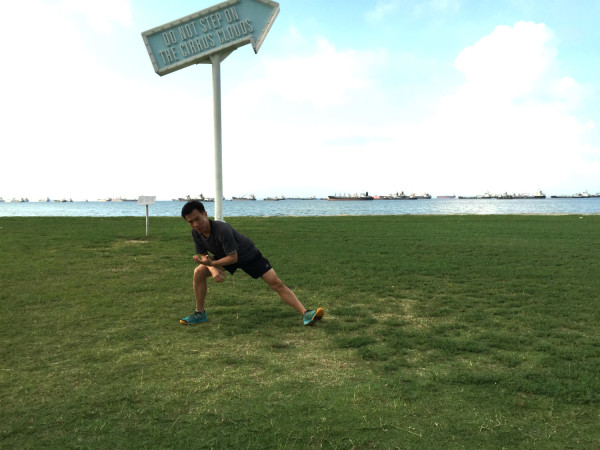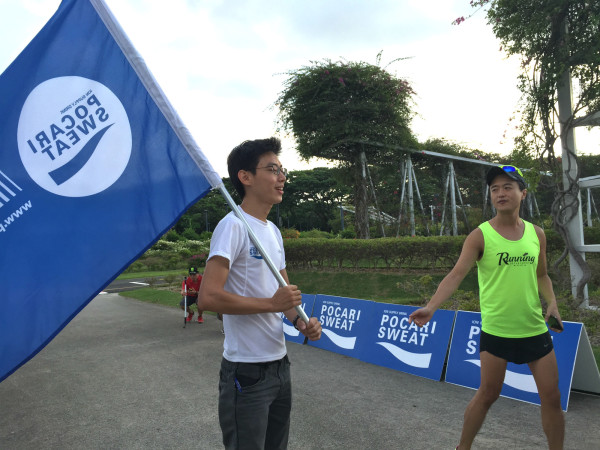Last weekend, Pocari Sweat Singapore organised a running clinic – to prepare runners for the Pocari Sweat Run, which will be taking place on 12 July at the Kallang Practice Track.
At the clinic, Ray Loh, an exercise physiologist at Tan Tock Seng Hospital, shared some warmup and cool down tips with both the participants, and the event’s pacers, from Running Department.
After the warmup exercises, we also went on a short, leisurely 5km run around the Sunset Bay cafe at East Coast Park, led by the pacers.
Here are the main warmup and cool down tips by Loh.
Warming Up
The physiologist stressed that a warmup session is extremely important for runners. He added, “A lot of runners tend to forget about the warmup and just do a slow jog to replace an actual warmup session. But that is not what the warmup is supposed to be about.
Instead, Loh explained that the entire warmup session should be split into three sections – firstly a dynamic warmup, followed by a cardiovascular (cardio) session and then finally, a running-specific warmup. In all, this session should take about 20 minutes.
Dynamic warmup
The dynamic warmup consist of simple exercises that will help to prepare the body for the demand and rigour of your workout session ahead, such as an intense run.
According to Loh, the dynamic warmup should prepare every single part of the body, from the head right down to the toe, including the shoulders, chest, hamstrings & trunk and finally the ankles.
Some exercises that Loh included into a warmup routine, were leg swings to active the hamstrings & glutes, arm circles to activate the shoulders, chest and back and ankle rotations to get the ankle muscles moving.
Cardio warmup
For the cardio warmup session, these exercises are good to get the blood flowing throughout the body, to prepare for the exercise session ahead.
Examples of such exercises for runners can include two to four minutes of jogging on the spot, burps or simple jumping jacks.
Running-Specific Stretches
According to Loh, running-specific stretches are important because they will help to improve your running performance during training and at the race itself, as well as preventing post-run aches and pains. These stretch the key muscles primarily used for running, such as the calves, quads, Iliotibial band (ITB) and hamstrings.
For these stretching exercises, Loh recommended that you should stay in one stretch position for between 30 to 60 seconds. This is because it takes about 10 seconds for the muscles to fully relax and stretch. If your muscles are exceptionally tight though, this will take longer.
But after more than 60 seconds though, the muscles will pull back so the stretch no longer becomes effective.
Cooling Down
According to Loh, simply sitting down is the worst thing that a runner can do after a run, because doing so will hinder the circulation of blood round the body – and cause cramps, as a result. Instead, you should stand up and walk around, in order to allow blood to flow – no matter how exhausted you are feeling.
A cool-down session will help to implement blood circulation around the body and these will help the body’s heart rate to return to normal, sooner.
During the cool-down session, Loh demonstrated exercises to help key running muscles stretch and thus prevent cramping. These primarily include the stretching of the ITB, hamstrings, calves and buttocks.







Everything is very open with a very clear description of the issues.
It was really informative. Your site is very helpful.
Thanks for sharing!